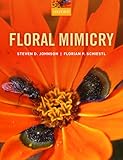Floral mimicry / Steven D. Johnson, Florian P. Schiestl.
Material type: TextPublisher: Oxford ; New York : Oxford University Press, 2016Edition: First editionDescription: xii, 176 pages, 8 unnumbered pages of plates : illustrations (some color) ; 25 cmContent type: text Media type: unmediated Carrier type: volumeISBN: 9780198732709; 0198732708; 0198732694; 9780198732693Subject(s): Mimicry (Biology) | Flowers -- Adaptation | Mimicry (Biology)DDC classification: 581.47 LOC classification: QH546 | .J65 2016
TextPublisher: Oxford ; New York : Oxford University Press, 2016Edition: First editionDescription: xii, 176 pages, 8 unnumbered pages of plates : illustrations (some color) ; 25 cmContent type: text Media type: unmediated Carrier type: volumeISBN: 9780198732709; 0198732708; 0198732694; 9780198732693Subject(s): Mimicry (Biology) | Flowers -- Adaptation | Mimicry (Biology)DDC classification: 581.47 LOC classification: QH546 | .J65 2016| Item type | Current library | Call number | Copy number | Status | Notes | Date due | Barcode |
|---|---|---|---|---|---|---|---|
 Books
Books
|
Female Library | QH546 .J65 2016 (Browse shelf (Opens below)) | 1 | Available | STACKS | 51952000229650 | |
 Books
Books
|
Main Library | QH546 .J65 2016 (Browse shelf (Opens below)) | 1 | Available | STACKS | 51952000229643 |
Browsing Main Library shelves Close shelf browser

|

|

|

|

|

|

|
||
| QH541.5.S3 .S696 2016 Stressors in the marine environment : physiological and ecological responses ; societal implications / | QH545 .A1 I42 2006 Industrial pollution : problems and solution | QH545.T7 .T7267 2015 Trace materials in air, soil, and water / | QH546 .J65 2016 Floral mimicry / | QH583 .B73 2012 Secret chambers : the inside story of cells and complex life / | QH604.2 .F36 2016 Body messages : the quest for the proteins of cellular communication / | QH 613 .T39 2008 أساسيات علم كيمياء الأنسجة : النظرية والتطبيق / |
Mimicry is a classic example of adaptation through natural selection. The traditional focus of mimicry research has been on defence in animals, but there is now also a highly-developed and rapidly-growing body of research on floral mimicry in plants. This has coincided with a revolution in genomic tools, making it possible to explore which genetic and developmental processes underlie the sometimes astonishing changes that give rise to floral mimicry. Being literally rooted to one spot, plants have to cajole animals into acting as couriers for their pollen. Floral mimicry encompasses a set of evolutionary strategies whereby plants imitate the food sources, oviposition sites, or mating partners of animals in order to exploit them as pollinators. This first definitive book on floral mimicry discusses the functions of visual, olfactory, and tactile signals, integrating them into a broader theory of organismal mimicry that will help guide future research in the field. It addresses the fundamental question of whether the evolutionary and ecological principles that were developed for protective mimicry in animals can also be applied to floral mimicry in plants. The book also deals with the functions of floral rewardlessness, a condition which often serves as a precursor to the evolution of mimicry in plant lineages. The authors pay particular attention to the increasing body of research on chemical cues: their molecular basis, their role in cognitive misclassification of flowers by pollinators, and their implications for plant speciation.--publisher.
Includes bibliographical references and index.
Introduction -- The evolution and maintenance of floral rewardlessness -- Generalized food deception -- Batesian food-source mimicry -- Sexual mimicry -- Oviposition-site mimicry -- Special cases -- Future directions in floral mimicry research -- Epilogue.
1 2

There are no comments on this title.